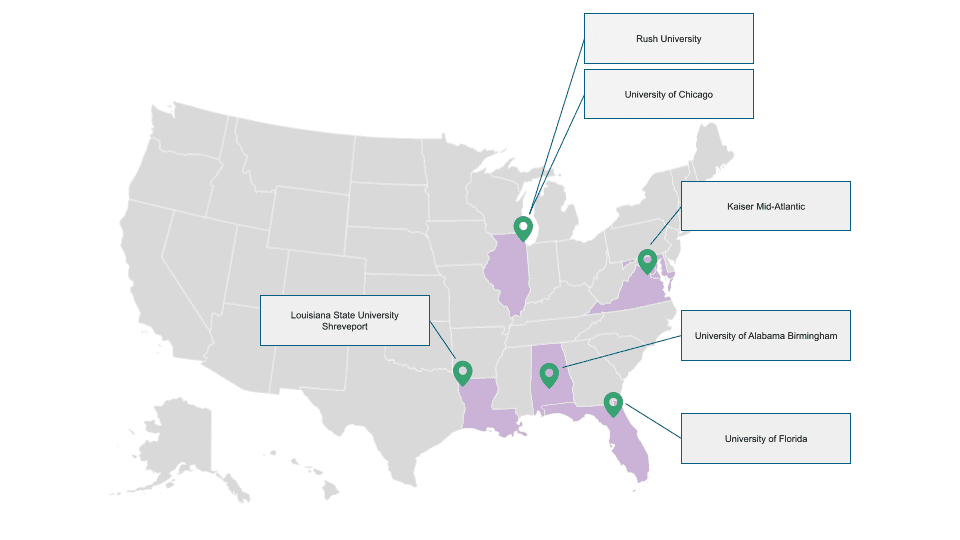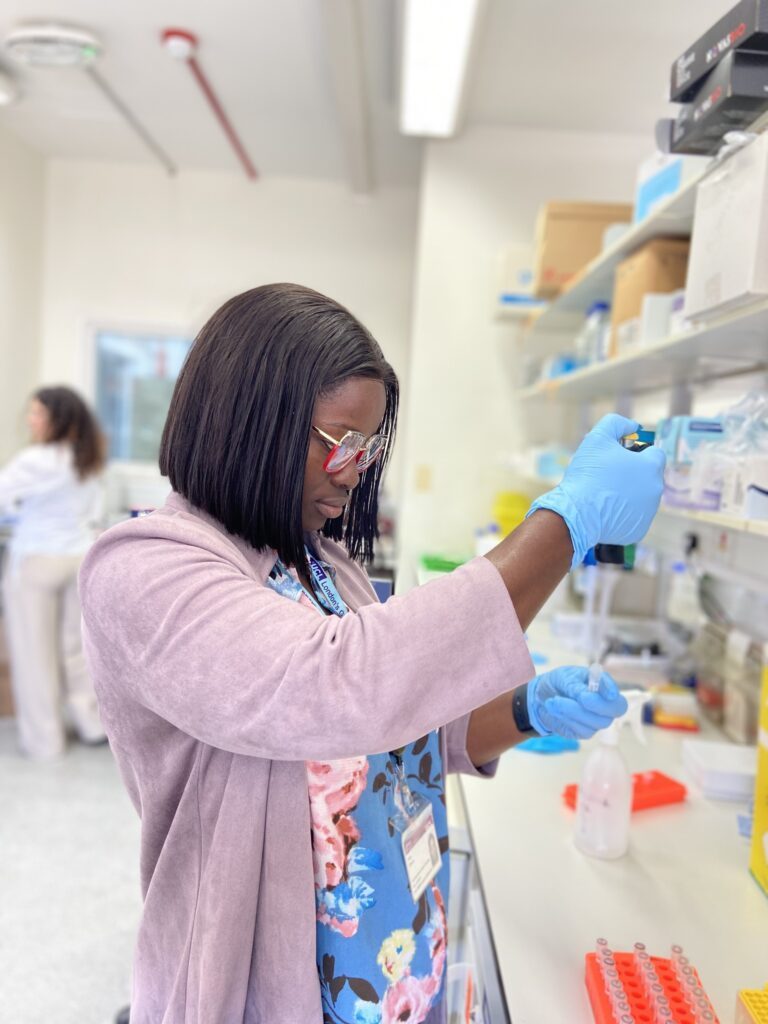Since its launch in 2021, the Black and African American Connections to Parkinson’s disease (BLAAC PD) study has already made significant strides in advancing the involvement of Black and African Americans in Parkinson’s disease (PD) research discoveries. The goals of this study have been supported by individuals experienced in clinical research recruitment and partnerships with the Black and African American community. BLAAC PD was intentionally designed and allocated dedicated funding to specifically overcome barriers to participation commonly experienced by the community.
There is significant diversity within the broad racial category of Black and African Americans. In history, significant events such as the African Diaspora and Great Migration, have greatly influenced the diversity of Black and African American communities across the United States. The diversity of this broad racial group includes individuals with histories tied to American history, dispersing across the country during the Great Migration, and immigrants from dozens of countries across the globe. Black immigrants contribute quite significantly to the diversity of the population, with approximately 21% being immigrants or children of immigrants(1). Of the Black immigrants arriving in the United States, about 50% immigrate from the Caribbean, from countries such as Haiti and Jamaica, and 50% from Africa, primarily from Nigeria and Ethiopia. The geographical dispersion of Black immigrants also differs by country of origin. Majority of Caribbean immigrants reside in the Northeast and South, while African immigrants tend to be more dispersed across the United States (2).
 Cities with the largest populations of Black and African Americans include New York, Atlanta, Washington D.C., Chicago, Philadelphia, and Dallas (3). With six BLAAC PD sites located at the University of Alabama Birmingham, University of Chicago, University of Florida, Kaiser Permanente Mid-Atlantic, Louisiana State University, and Rush University, the study has experienced many successes and limitations.
Cities with the largest populations of Black and African Americans include New York, Atlanta, Washington D.C., Chicago, Philadelphia, and Dallas (3). With six BLAAC PD sites located at the University of Alabama Birmingham, University of Chicago, University of Florida, Kaiser Permanente Mid-Atlantic, Louisiana State University, and Rush University, the study has experienced many successes and limitations.
Over 340 participants have enrolled (180+ control volunteers and nearly 160 people with Parkinson’s disease) into BLAAC PD across the six sites, creating the largest known database of genetics combined with cross-sectional clinical information from Black and African Americans with PD to date. GP2 has collaborated with several organizations across the country to further the mission of BLAAC PD, including the Parkinson’s Foundation, NORC at the University of Chicago, and the Clinical Trials Coordination Center. In 2022, The Michael J. Fox Foundation (MJFF) collaborated with NORC to support sites’ community engagement efforts and recruitment of participants into BLAAC PD. On behalf of MJFF, NORC developed recruitment strategies and best practices for the BLAAC PD patient population based on a literature review and BLAAC PD’s experiences and successes. MJFF and NORC have worked closely with the BLAAC PD sites, pairing the Roadmap with site-specific community engagement plans and guidance to support the sites’ success in enrollment thus far.
Amidst our existing successes, we believe that increasing the diversity of participants in BLAAC PD can better represent the Black and African American community in the United States, and also improve the quality and accuracy of outcomes and discoveries. Therefore, BLAAC PD seeks to dramatically expand in the coming year, increasing the number of sites to strategically recruit and increase representation of Black and African American participants. More sites covering more cities and regions across the United States can support the accurate representation of the population, addressing the significant geographical dispersion of the Black and African American population and diversity within it. We are progressing towards our goal of at least 2,000 participants, and by expanding sites and diversifying participant representation through coverage in increasing geographical areas, we envision gaining greater genetic understanding of PD in the Black and African American population. “We’ve had many successes and learnings with over 300 samples and 6 sites,” shared Alyssa O’Grady, Vice President of Clinical Research at The Michael J. Fox Foundation, “imagine how much more we will uncover with 2,000 participants from sites all across the United States.”
Utilizing BLAAC PD data in conjunction with data collected from several cohorts contributing to the Global Parkinson’s Genetics Program including the Nigerian PD Research Network and IPDGC Africa, the discovery of the GBA1 risk variant highlights the unique, population-specific genetic risk for PD. This discovery is only the beginning of many other subsequent findings related to Black and African American individuals with PD. “This study provides critical insights into disease risk in a population traditionally underserved, holding promise for novel therapeutic strategies,” said Sara Bandres-Ciga, staff scientist at the National Institute of Aging and National Institute of Health, “We are at the beginning of our journey. Let’s use this momentum to scale up our work and further develop the potential for inclusive research while inspiring others. The greater representation we have, the more we can learn.” By engaging more participants into studies like BLAAC PD and IPDGC Africa, we can quickly and more confidently understand the mechanism of the GBA1 risk variant and continue progressing with tenacity to find a cure.
The expansion opportunity application is no longer open.
(1) Pew Research Center (2022). Key Findings about Black Immigrants in the U.S.. https://www.pewresearch.org/short-reads/2022/01/27/key-findings-about-black-immigrants-in-the-u-s/
(2) Pew Research Center (2015). Chapter 1: Statistical Portrait of the U.S. Black Immigrant Population. https://www.pewresearch.org/social-trends/2015/04/09/chapter-1-statistical-portrait-of-the-u-s-black-immigrant-population/
(3) Pew Research Center (2023). Facts about the U.S. Black Population. https://www.pewresearch.org/social-trends/fact-sheet/facts-about-the-us-black-population/






